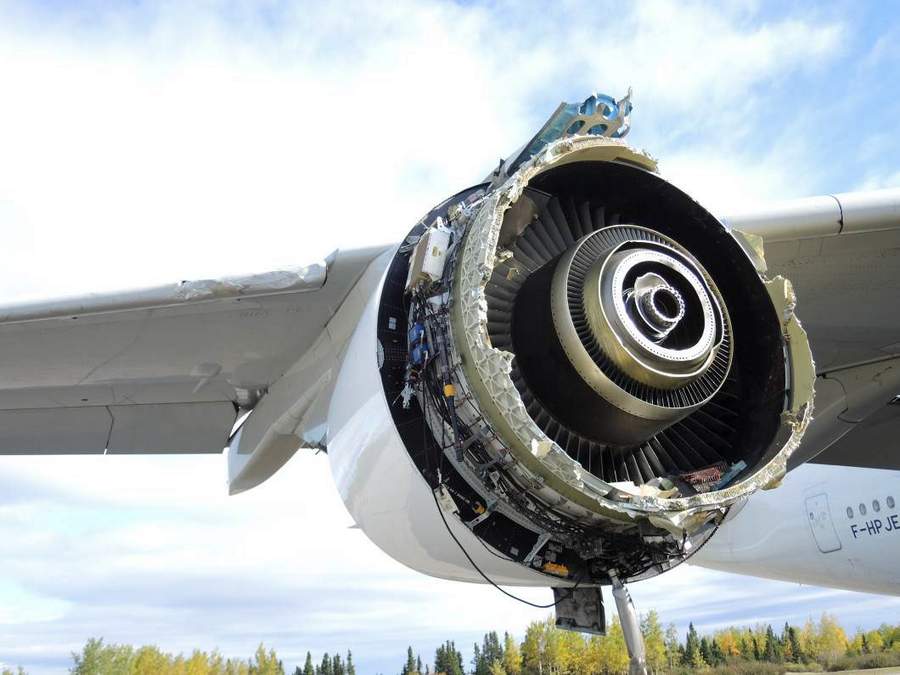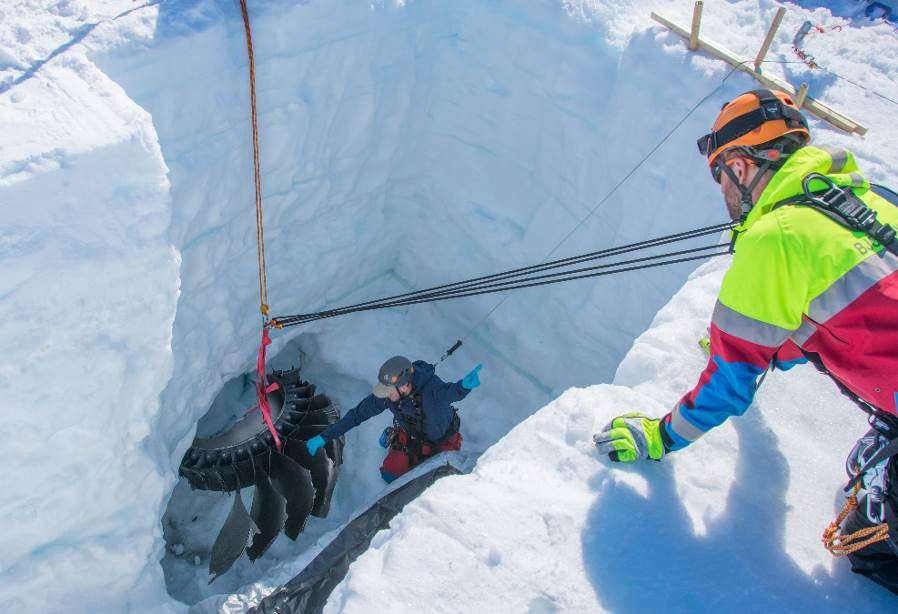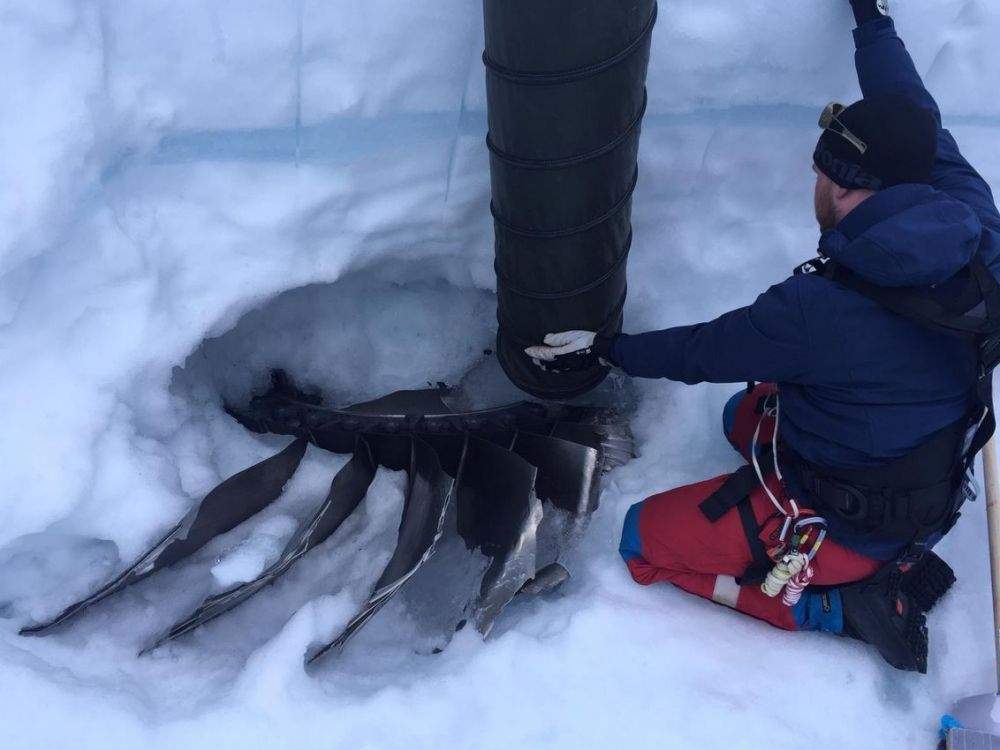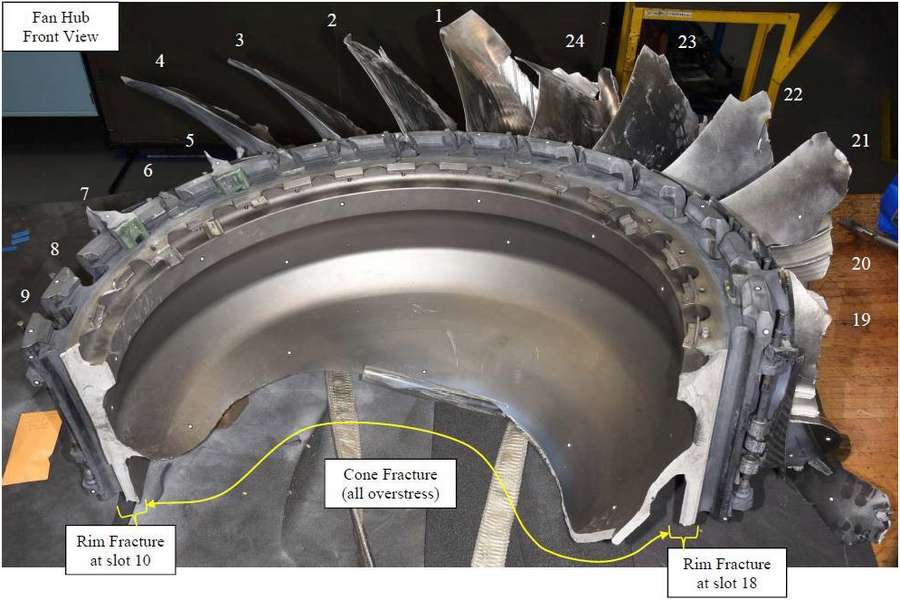What happens if a jet suffers an uncontained engine failure and loses a fan disk hub while overflying a glacier? And you really NEED the hub?
The people asking themselves these rather unlikely but very serious questions were air accident investigators. They worked for BEA (Bureau d’Enquêtes et d’Analyses), i.e. the French Civil Aviation Safety Investigation Authority. The accident they were investigating was Air France flight AF-66. It flew from Paris Charles de Gaulle Airport (LFPG) in France to Los Angeles International (KLAX) in the United States.

The flight had taken off uneventfully, making its way across the North Atlantic, at cruise altitude. But engine No4’s fan disk hub failed while the crew were overflying a glacier (or glaciers) in Greenland. This aircraft had four Engine Alliance GP7270 engines. Engine Alliance is a partnership between Pratt & Whitney and General Electric, to make engines for the A380.
Investigation Begins
The Air France flight crew diverted to Goose Bay airport (CYYR) in Canada. And they faced some unexpected challenges, in getting there. They discovered that they had to drift down to a lower altitude than expected, flying on three engines. This was because of the increased drag of the failed engine. Also, the crew knew that they had damage to the leading edge of the right wing. This played a role in their choice of Goose Bay as a diversion, thinking they might not be able to use flaps.

Finding the fan disk hub and the rest of the parts that fell on the glacier in Greenland was a priority. The hub broke into three sections. Its central part stayed with the engine. But the rest broke in two, one ejecting itself upward, the other downward. The engine air inlet also separated from the plane. It was likely the inlet that caused most of the damage to the wing. Fortunately, there was no damage to the fuselage.
The accident happened on the 30th of September, 2017. Initially, teams used helicopters to search a “rough zone” in Greenland. This was the most likely location for the fan disk hub and the rest of the missing parts on the glacier. Search teams used helicopters and found many parts, including fan blade fragments, bits of the containment case and the front cone. They also found the whole air inlet, in pieces. But these are relatively lightweight parts.

Looking For A Fan On (or in?) A Glacier
There were no signs of the much heavier fan disk hub on the surface of the glacier. Rough weather, including snow and high winds, ended the search after only three flights on the 12th of October. And since more snow would now cover the area, investigators knew that they would need a new search strategy. Or a new search partner.

This is where ONERA came in. The French aerospace lab (Office National d’études et de Recherches Aérospatiales) was approached by BEA as well as Airbus and Engine Alliance, for help. To find the missing fan disk hub, ONERA used a Falcon 20 bizjet, that carried SETHI, an experimental hyperfrequency radar.
The whole operation ultimately involved multiple radars, working at slightly different frequencies. The flights took place in April 2018, lasting about a month. Incredibly, ONERA mapped a 60-square-kilometre (~15-acre) area of snow and ice to a depth of 45 metres (150 feet)! But processing the data was just as daunting a task, that took more time. Again, this radar technology was brand new at the time.

Fan Glacier Search: Discovery And Aftermath
A first ground search at the glacier, using raw data, found no trace of the fan hub. So the team regrouped, realizing that they wouldn’t get their hands on the hub in 2018. But over the next few months, ONERA fine-tuned its data processing and found three high-probability locations. And one of these three was much more promising than the other two. At the same time, ground search teams fine-tuned their own equipment. This was a Danish electromagnetic detection system.
The ground search team found the fan disk hub at the glacier under 4 metres (13 feet) of packed snow. It was right where ONERA said it would be. They finally extracted it from its burial ground in June 2019. The titanium hub weighed 150 kilos (330 lbs), so extracting it without damaging it, in the middle of nowhere, was no easy task!

But it was worth it. The discovery of the fan disk hub fragment on the glacier changed the outcome of the investigation. It revealed a Low Cycle Fatigue (LCF) that had to do with the type and the size of the titanium alloy the fan hub was made of. It also revealed a need for more study into cold dwell fatigue on this and other new titanium alloys.
Fortunately, the engine manufacturer found no more such weaknesses in other A380s worldwide. But the search and discovery of the fan disk hub in that glacier in Greenland, offered valuable data, for future engines.



